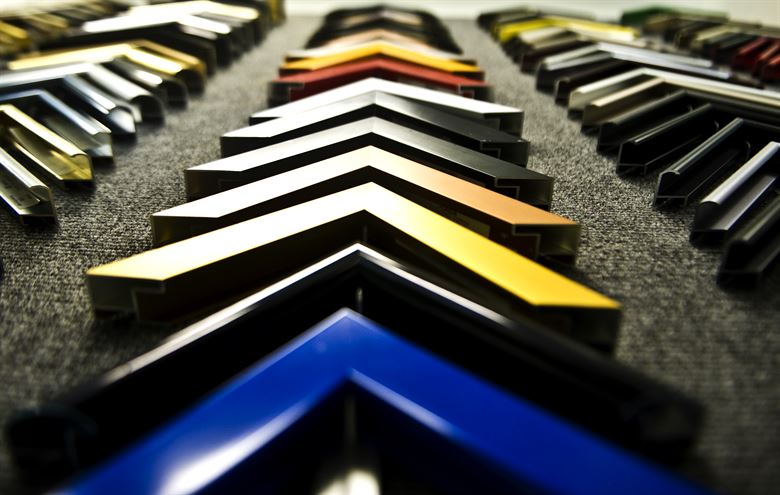
At the Elsinore Framing & Art Gallery, we have framed almost anything you imagine. From simple poster framing to complex and intricate collages, we have seen it all. But for the novice art collector or artist, it’s difficult to know just what types of framing work best for the myriad of art media available today. So, what exactly goes into proper picture framing and what should you leave out in some cases?
Picture framing is not a “one size fits all” business. We are always learning and adapting our materials to new art styles and media. A few years ago, the majority of our framing projects included a wood or metal frame, 1-3 cut mats, backing and glass. Today, about ½ of our projects are either on canvas or some other media which require a whole different materials list. Here are a few basic project categories along with their corresponding materials.
- POSTERS– For most posters or open editions, you need a basic metal or wood frame, a foam-core backing and at least regular clear glass. Many posters will require permanent mounting to keep them flat. However, signed or valuable commemoratives should be museum matted with conservation glass to preserve collectible value.
- LIMITED EDITION ART/ORIGINALS ON PAPER-Signed and numbered editions should always be framed with at least one mat or an acrylic spacer to keep the glass off the print surface. Museum mounting (which is reversible) and conservation glass is recommended. All materials should be of conservation quality to insure longevity and collectability.
- ART ON CANVAS-Almost all art on canvas should be stretched on canvas strainers or stretcher bars and framed without glass. Since canvas is fabric, it is important not to enclose it with glazing. They can be straight framed in a traditional frame or stacked with a fabric liner and frame. Some deeper gallery-wrapped canvases work well in “floater” frames that surround the image instead of coming over the edge of the image.
- Other Fabric Art- Needlework, Silks or other fine fabrics should be stretched or blocked to a backing either by hand-sewing or other reversible attachments. Heavier fabrics can be stretched on bars like canvas. In most cases, the matting and framing rules for limited edition prints and originals on paper apply.
- MEMORABILIA/COLLAGES– Again, the main priority is to preserve the items being displayed, so follow the same conservation rules as in limited edition prints and originals. In addition, special shadowbox frames are needed for many of these projects to allow for the depth of the included objects. Sturdy, yet reversible mounting may be needed for heavier objects, apparel and 3-D items.
As always, trust your professional framer to know the best materials for each type of project. We have made a substantial effort to educate our staff in the very best framing methods for each type of project. Visit our store at 444 Ferry St. SE in downtown Salem, OR to learn more about our custom picture framing.
